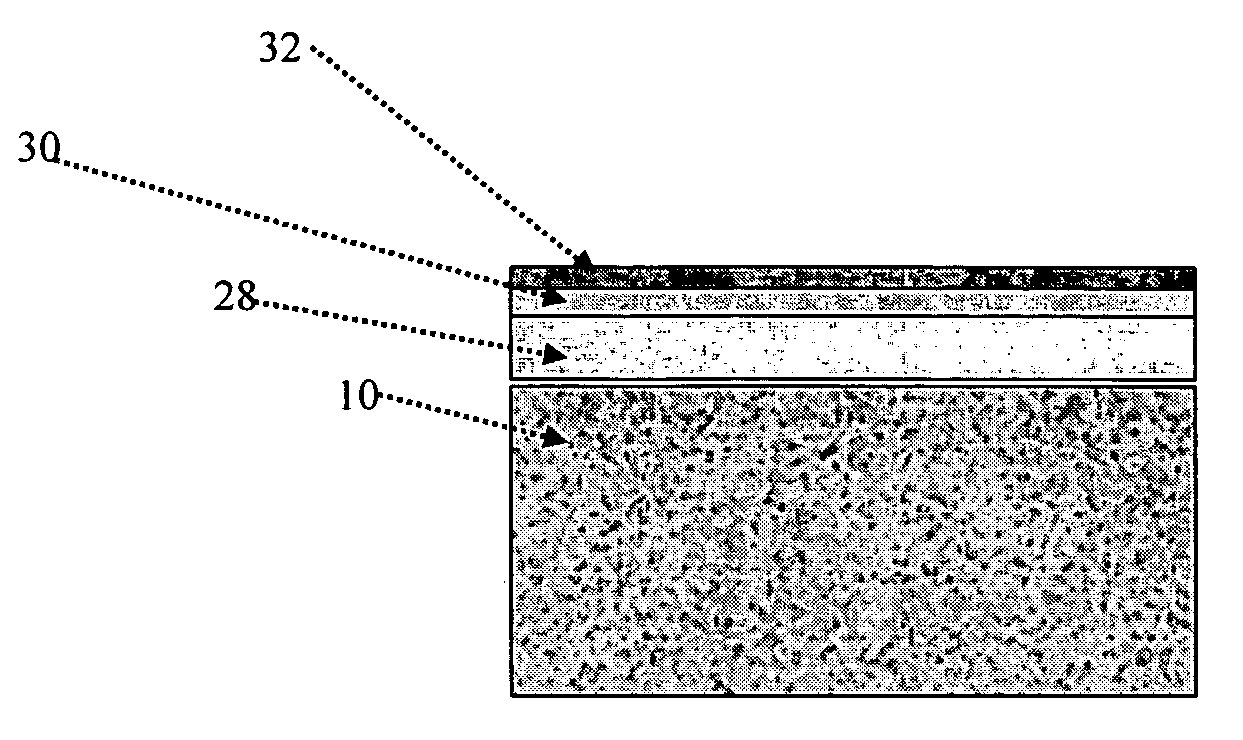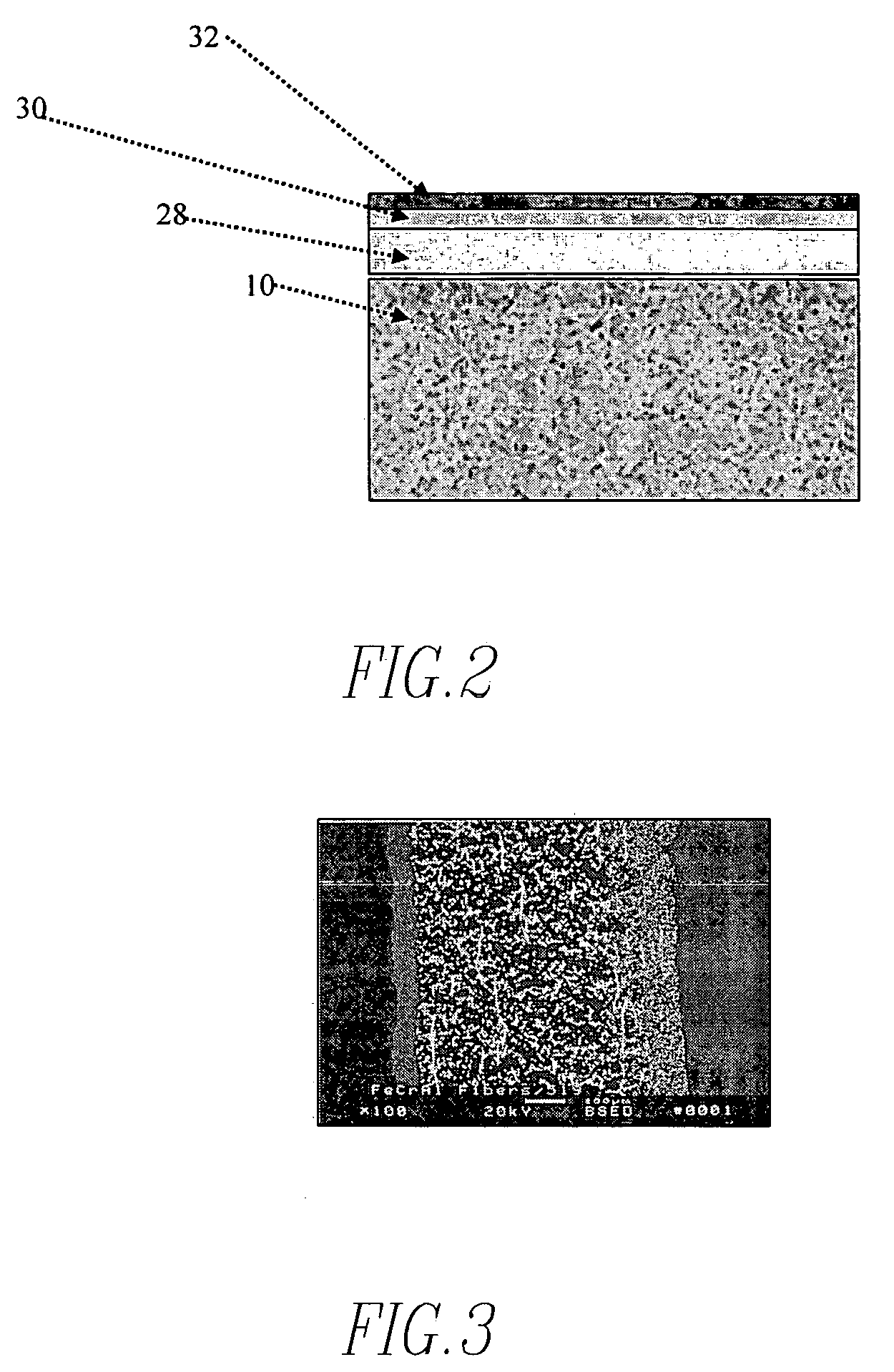Metal gas separation membrane
a metal gas and separation membrane technology, applied in separation processes, filtration separation, gravity filters, etc., can solve the problems of relative impure product gas, low selectivity, and membranes also suffer from a lack of stability, so as to improve the adhesion of the coating, reduce the thickness of the palladium layer, and improve the effect of adheren
- Summary
- Abstract
- Description
- Claims
- Application Information
AI Technical Summary
Benefits of technology
Problems solved by technology
Method used
Image
Examples
Embodiment Construction
[0021]This invention is an improvement to the porous metal membranes described in patent application Ser. No. 09 / 822,927, filed Mar. 30, 2001, one embodiment of which is illustrated in FIG. 1. The metal gas separation membrane 4 illustrated in FIG. 1 is configured to separate hydrogen gas from a feed gas stream 8. As will be set forth more fully below, the metal gas separation membrane 4 is also configured to be highly selective to hydrogen, meaning that it permits the permeation of hydrogen therethrough and resists the permeation of other gases. The metal gas separation membrane 4 further permits relatively high flow rates of hydrogen therethrough.
[0022]The metal gas separation membrane 4 includes a transmission member 6 that can be of numerous shapes, such as plates, tubes, honeycomb configurations and other such shapes. The transmission member 6 is depicted schematically in cross-section in FIG. 1 and includes a porous body 10 made out of the plurality of metal particles or fiber...
PUM
 Login to View More
Login to View More Abstract
Description
Claims
Application Information
 Login to View More
Login to View More - R&D
- Intellectual Property
- Life Sciences
- Materials
- Tech Scout
- Unparalleled Data Quality
- Higher Quality Content
- 60% Fewer Hallucinations
Browse by: Latest US Patents, China's latest patents, Technical Efficacy Thesaurus, Application Domain, Technology Topic, Popular Technical Reports.
© 2025 PatSnap. All rights reserved.Legal|Privacy policy|Modern Slavery Act Transparency Statement|Sitemap|About US| Contact US: help@patsnap.com



